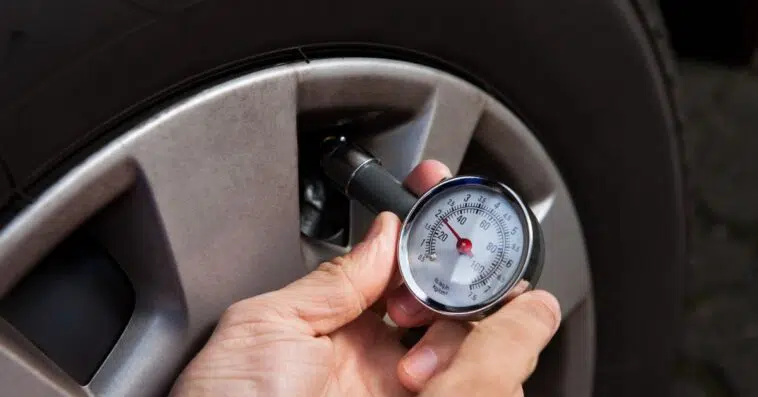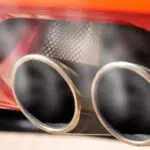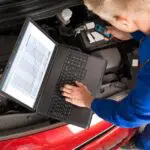Most vehicles on the market don’t come equipped with a tire monitoring system. Getting a new one may be costly, so the only way to check the air pressure is manually. The air pressure of a tire should never drop below a certain range.
You may have noticed that some tires have a “51 PSI Max” written on them. So, the question arises, what is the recommended tire pressure for 51 PSI Max?
The answer to this question is around the 36 PSI mark. This is the perfect pressure of air that must be in the tire. Anything more or less, and you may run into problems.
Not everything is as simple as it seems. If you are a vehicle enthusiast, then you need to have the correct information on everything that needs constant maintenance, in this case, the vehicle’s tires.
TABLE OF CONTENTS
Importance Of Tire Pressure Checking
Users need to check the pressure level of their tires regularly. If the tire is not inflated properly, you are guaranteed to run into many problems. Some of the many issues that can occur with less tire pressure are:
- Reduced fuel efficiency.
- Less control over the vehicle.
- Poor driving experience.
As you can see, getting your tire pressure up to the mark is not a simple process. You need to have some prior information to ensure that the tires’ longevity and the vehicle itself is maintained.
How To Check Tire Pressure
Unlike some other parts of a vehicle, checking tire pressure is a relatively easy job. You do need a gauge, which can be bought online. Gauges are inexpensive, and even the cheap ones are reasonably accurate in informing of your tire pressure.
Let’s list the steps of checking the tire pressure:
- Wait for the tires to cool down if you have been driving recently. This is because warm or hot tires have air that is at a much higher pressure than usual. I will get back to this point further down in the article.
- Grab a pen and paper in the meanwhile. The first step is to check the recommended PSI of the tire. In the case of many of you readers, it will say 51 PSI max. For those who don’t know, the number is written on the door of the vehicle. It is fairly easy to spot.
- Mark the recommended readings on the paper.
- Now comes the fun part. You have to connect the gauge to the tire and measure the reading. This must be repeated for all four tires.
- Write down all the readings and then compare that to the recommended pressure.
If the pressure is less, then you have to get the tires refilled from a workshop. If it is more, you may have to relieve the pressure to get in the recommended range. If it checks out, then you don’t need to do anything.
If you don’t have access to one, then you can drive to the nearest workshop to get the tires inspected. A check-up of the tire pressure is usually free, but some shops may end up charging you a couple of dollars for it.
What To Do If Tire Pressure Is Low
If the tire pressure is low, you might have noticed a drop in the performance and fuel efficiency of the vehicle. Because when the tire is not inflated fully, it drags against the ground a lot.
This creates more friction than normal, which causes poor performance. In the case of low tire pressure, there are two ways you can fill it up.
1. Using An Air Pump
An air pump is something that can come in handy in situations like these. You can go online or to the nearest hardware store and get an air pump. It connects to the charging plug in the vehicle, so you don’t even need an external power supply for it.
Air pumps are cheap, effective, and portable. You can put one in the trunk of your vehicle and forget about it. It will be of a lot of help if there is an urgent tire inflation need.
The process of filling up the tire with an air pump is as simple as connecting the pump pipe to the tire and turning it on. It will take a maximum of ten minutes, depending on how low you are on air, and then you should be good to go.
2. Get A Mechanic
If you don’t have an air pump and you noticed low air pressure in the tires, then you can either call a mechanic or get the vehicle towed to the nearest workshop. An air fill-up should not cost you a lot.
You just have to get the vehicle picked up from the side you noticed low pressure. There are gas stations too that have this facility, but they are normally broken. So, you can take your chances there if one is near you.
What If The Pressure Is High?
So, you just compared your 51 PSI Max tire readings, and the pressure is higher than it is supposed to be. Well, that will cause a lot of trouble and may even get you in a fatal accident.
The thing is, air expands quickly when the temperature rises. In the case of the tire, the friction with the road is more than enough to make the tire hot to the touch. Combine that with most areas that have the sun shining on them, and you are looking at a tire rupture.
If the air cannot find more area to expand, the pressure inside the tire will increase dramatically. It will reach the point that it will not be able to contain it anymore.
The burst will happen in the middle of the road while driving, and you may be subject to some serious injuries. Let’s also not forget about the vehicles that will be around you.
What Is The Recommended Tire Pressure For 51 PSI Max?
Let’s talk about the question you have all been waiting for. I gave you an estimate of the pressure value that should have been in the tire in the introduction, but let’s discuss that further.
As I stated, if a tire states that its maximum limit is 51 PSI, then you should get only 36 PSI filled. Unless you use your vehicle for outdoor purposes, this is the maximum pressure in the tire.
Why Is The Limit Given?
This is an excellent question. A common misconception is that the 51 PSI Max limit means that the tire can be inflated up to 51 PSI. Indeed, it can be, but you will have to deal with the repercussions.
The reality is that the tire can handle a max pressure of 51 PSI. When you consider road friction and temperature, you will find out that the only way to go is to fill in the tire at around 75 to 80% of the max pressure amount.
If you still don’t understand, then I will suggest a test. Take a reading of the tire pressure when it is cool. Drive to your destination and confirm if the tire is hot. If it is, then you can take the reading. The value will be noticeably more than the previous one.
The reason is the increased pressure due to friction. That is why it is recommended to stay away from the maximum pressure limit of a tire. You need to give it enough headroom so the pressure can be managed in extreme circumstances.
Warnings And Additional Information
Apart from all of this, other things you should know are that if the pressure in the tire is too much or too little, then you may be looking at poor traction from the vehicle. This is because the shape of the tire becomes too distorted.
The unevenness will also mean that the tire will not wear at the same level from all angles. If you continue this practice, then you can expect to replace the tires much quicker than expected.
Trusting The Side Wall Number
You should not blindly trust the number on the sidewall of the vehicle’s door. The reason for that is, it has been mentioned only for the stock tires. Aftermarket tires may have a different pressure rating.
Plus, if you are one of those people that have installed a larger-than-stock tire on the vehicle, then you should definitely not follow the vehicle’s recommendation. Larger tires need more pressure. Under-inflating them will cause issues such as the ones I listed above.
Conclusion
I bet that you were expecting a one-line answer when you clicked on this article. Well, Car Proper is not about that. The safety of our readers is our first priority, and we can only write an article to help you out.
I hope that you got the answer to the question, what is the recommended tire pressure for 51 PSI Max? In case you missed it, the answer is 36 PSI.
The process is not as simple and plain as it seems. Regardless, if you are still rocking the stock tires, then you can just use the pressure that is mentioned on the sidewall. If not, then it is better to contact the tire manufacturer to clear up your confusion.




